It has been five days since Laughing Gull and our crew of four arrived in Horta, on the island of Faial in the Azores. We managed, despite some effort to avoid arriving at a new and very crowded port in the dark, to arrive at…3 am. You can’t control everything.
In some ways it was a big moment: almost 1900 miles sailed from Bermuda, eleven and a half days at sea, three time zones traversed, a big stretch of the Atlantic crossed, and what many consider a “transatlantic” completed (you can find my daily updates here if you want a sense of what the day to day was like).
And in some ways it seemed like not that big a moment: we still have 1000 miles to go to arrive in Ireland, the passage was not that much longer than a passage from the Chesapeake to the Caribbean, and overall it was an extremely pleasant experience, with no severe weather, and virtually no rain. If anything the biggest challenge was light winds.
My ambivalence about how to rate the voyage in some ways reflects how well-suited LG is for a voyage like this, and how confident I have become in her seakeeping and passagemaking capabilities. A great bluewater boat can make a big bluewater passage seem pretty routine. It is pretty cool to be on the eastern side of the Atlantic, though. That feels like something very different.
It was an interesting trip. If the June weather in the Atlantic mostly does what June weather is supposed to do, the basic setup for the voyage is pretty straightforward. First, head north and east from Bermuda on a beam reach to get north of the Azores High, where you will find winds from the west and southwest. This was very fast and enjoyable sailing, in good wind. LG blasted along, averaging more than 7.5 knots, to jump us past the 1000 mile mark in short order.
Then things slow down as you encounter the Azores High. The trick is to run east at a latitude that avoids the windless high pressure to your south, and also keeps you south of the spicier conditions kicked up by low pressure systems passing to your north. You want to find the Goldilocks latitude, and in our case we settled in at about 40 degrees 20 minutes North. There we lucked into some favorable current, and enjoyed days of lovely light air sailing, with LG showing impressive speed in winds that ranged from 6-10 knots.
Eventually we ran out of wind and had to do some motoring, especially as we approached the Azores and had to turn southeast to sail back down to the latitude of Horta. Still, it is hard to imagine more benign conditions over nearly 2000 miles.
We did have one scary moment. Early in the passage, about 200 miles from Bermuda, we collided with a whale. I was down below and heard an almighty bang. “What the f*ck was that?” I shouted to the ondeck crew as I rushed topside. After a second of confusion, Henry looked astern and said “We hit a whale!” Lying in our wake we could see the broad back of a large marine mammal, seemingly as stunned as we were. There was no blood in the water, which was a good sign for the whale and for LG, as it suggested we had probably struck a glancing blow, instead of hitting the whale with the leading edges of our keel or rudder. I immediately returned below to see how we had fared, praying that LG hadn’t been holed, cracked or dealt a fatal blow.
I lifted floorboards and checked all the pumps. The bilge remained dry. The pumps remained silent. Our voyage, it seemed, hadn’t come to a miserable and premature end. All I can say is we got lucky (after being unlucky). On we sailed. Nervously.
For a few days the topic of what sort of whale we struck was a hot topic. Some believe it might have been an endangered North Atlantic Right whale. The coloring—which had a brownish hue—looked wrong to me, and east of Bermuda is not where you are most likely to find that species of whale. I prefer to believe it was a sperm whale, which are more common between Bermuda and the Azores. Plus, it means we can say Laughing Gull met and survived an encounter with Moby Dick.
In retrospect, our close encounter was not that surprising. Over the course of the voyage we saw whales nearly every day, more whales than I had ever seen in a single voyage. And lots and lots of dolphins, including pods of 20 or more, sometimes jumping and racing alongside. It is always encouraging to see lots of marine life, and discouraging to see little. This was a hopeful experience, a testament to how alive the oceans can be, especially in areas that are little trafficked by fishing or container shipping. Our crew welcomed the daily whale and dolphin shows, but I have to admit every time we saw whales ahead or alongside I experienced a slight bout of whale collision PTSD.
Apart from whales and dolphins, the passage was mostly plain sailing, with lots of good crew work, decent cooking, and plenty of hanging out and reading. Everyone slept plenty, we settled into a very smooth watch routine, and it was a pleasure to be abroad on a vast blue sea. During one break in the wind we hove LG to, and took a mid-Atlantic swim. Day became night. Night became day. We stopped keeping track and eventually we arrived in Horta. LG held up very well, as usual, and we finally had the chance to fly the top-down furling spinnaker. That was useful, because I now know that I absolutely hate the top-down furling setup and will switch the spinnaker to a sock as soon as I can. The more you sail a boat the more you learn about what works and what doesn’t.
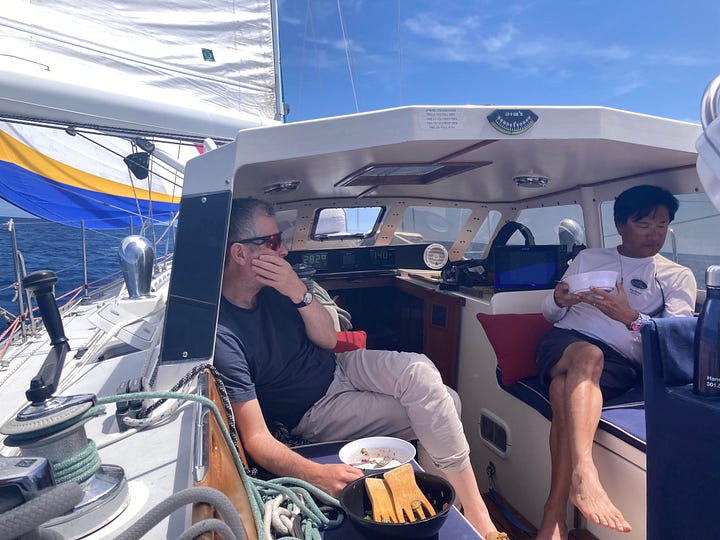
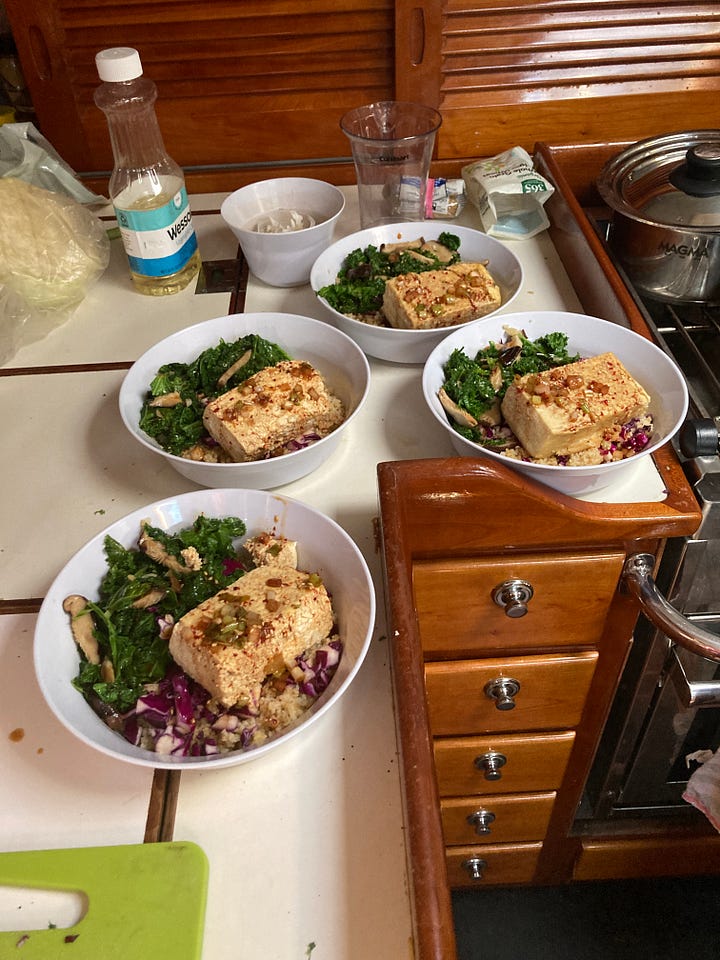
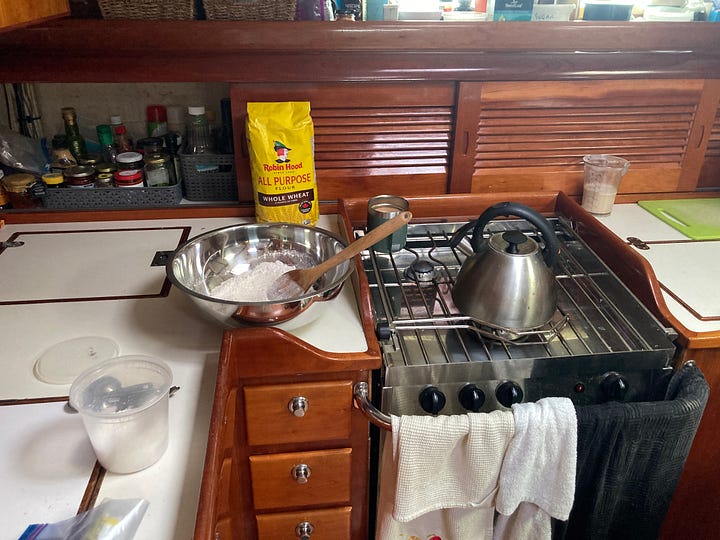

Horta is a special place. Around 1500 cruising boats pass through each year. By definition the boats you see here are not spiffy marina queens. They are well-sailed, long-distance voyagers, of all shapes and designs. Their skippers and crews generally know what they are about. The marina and port are run at a very high level of professionalism. Everyone is very friendly, and the showers and other facilities clean and well-managed. It is a true sailor’s destination.
One side-effect of its great appeal for boats crossing the Atlantic is that the anchorage can get very, very crowded. We have moved three times to avoid bumping into other boats when the wind or currents shifted in unanticipated ways. Most skippers accept that it is tight, and adjust the usual norms of what is “too close.” Still, there are skippers who look at you nervously and suggest you might be too close. But in this place, you are only too close if you are bumping hulls.
Ashore, there is a world-famous sailor’s bar called Peter’s Cafe Sport. I am usually skeptical of any institution that is “world-famous.” How can it live up to the hype? How can it not be over-run with tourists? In this instance, however, the hype is perfectly deserved. It is open at all the right hours, the beer is cold, the food is good, and the staff is gracious. If you stop in for breakfast, lunch or happy hour you are likely to run into another sailor you know, or meet a few new ones worth knowing. Needless to say, we’ve, um, spent some time in there.
The last note I’ll mention regarding Horta and the Azores is that everything is shockingly inexpensive. I’ve spent the last nine months cruising among islands with sky high prices. “What do you expect?” everyone always says. “Islands are expensive because everything has to be shipped in.” Well, the Azores are islands that are even farther away from mainland commercial hubs, and somehow everything is crazy cheap. A big beer is maybe 3 euro. Meals in restaurants are maybe 20 euro per person. A bottle of wine can be bought for less than 5 euro, and you are splurging if you go as high as 10.
To truly emphasize this point I will note that after arrival I started to feel something funny with a tooth. I found a nice dentist who took one look and made a loud groan. Completely fractured and had to come out he said, sadly. The next day he x-rayed my teeth, shot me full of local anesthetic, yanked the sucker out, stitched me up, and wrote me a prescription for an antibiotic (just in case). In the US I would have easily been out $600. Here, in Horta, I received a dental bill for…75 euros. 75! (And the antibiotics cost 6 euros in the pharmacy). Add in lots of natural beauty, and I would say that life could be pretty good in the Azores.
Sail here when you can. It may or may not feel like a big deal to make the passage, but you will not regret it. There is lots to love about the Azores, and I am glad LG has another few weeks to explore before we head north to Ireland.
If you liked this post from Sailing Into The Anthropocene, why not subscribe here (free!), and/or hit that share button below? You can also find me on Instagram and BlueSky.




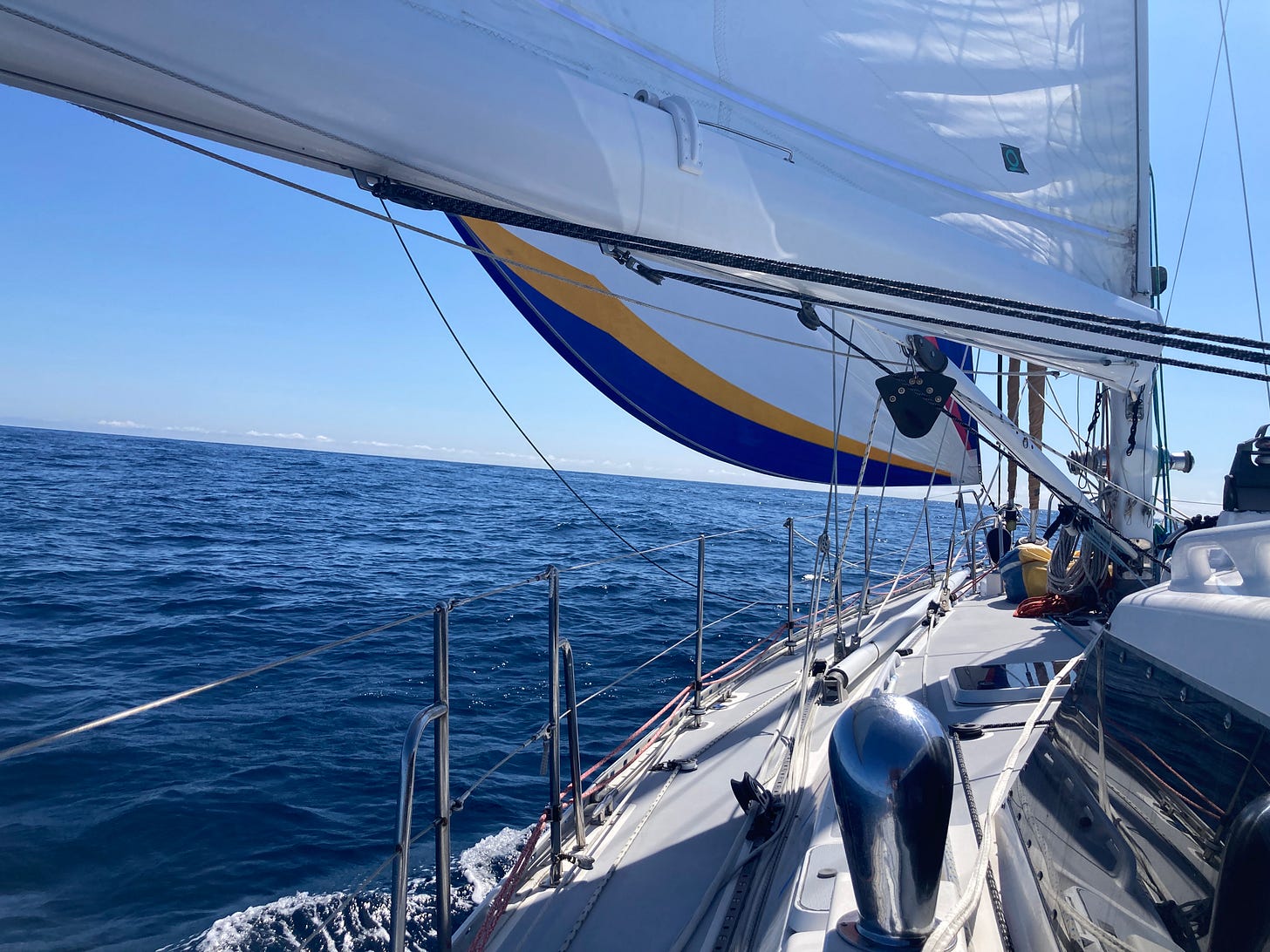

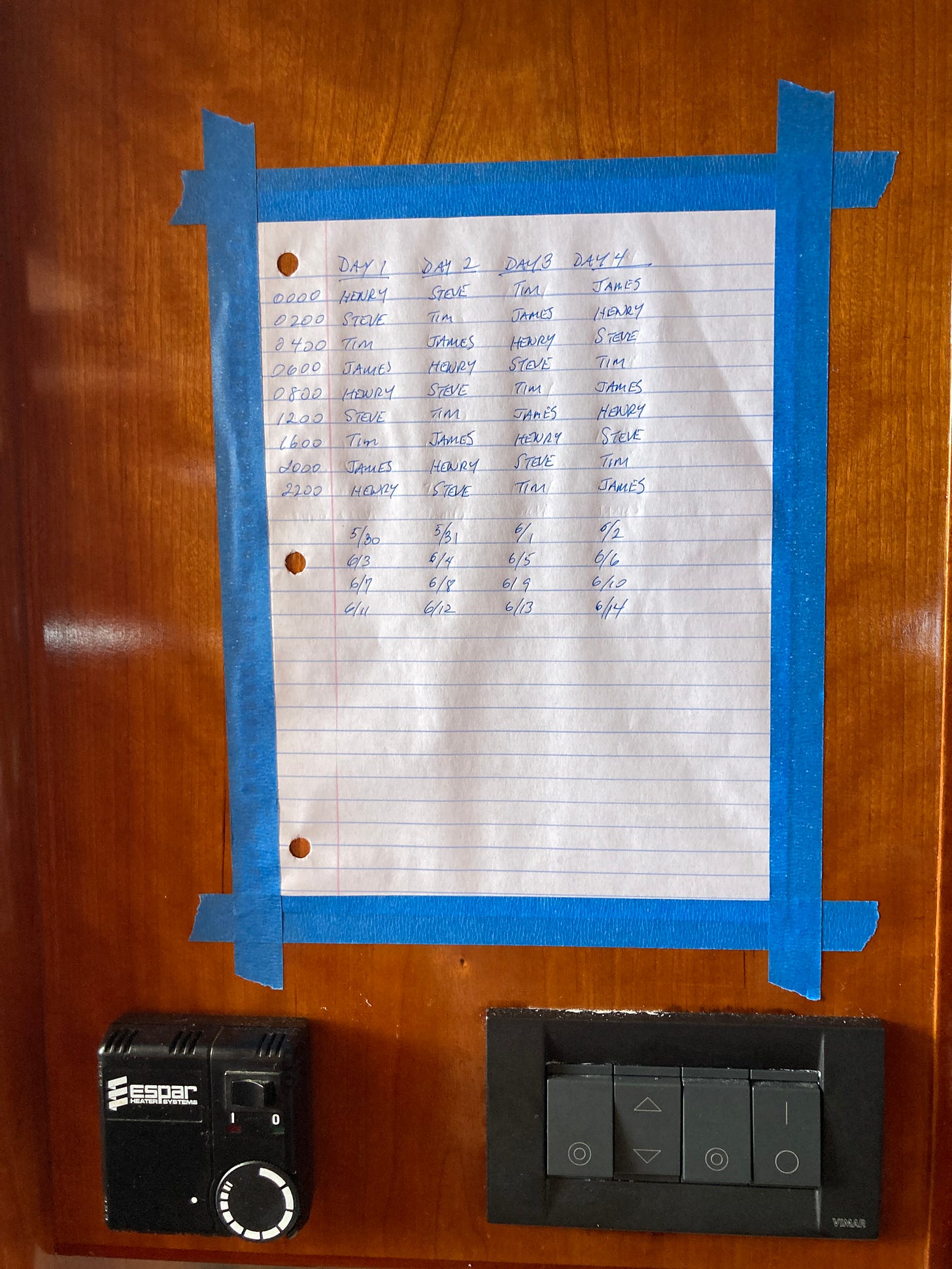
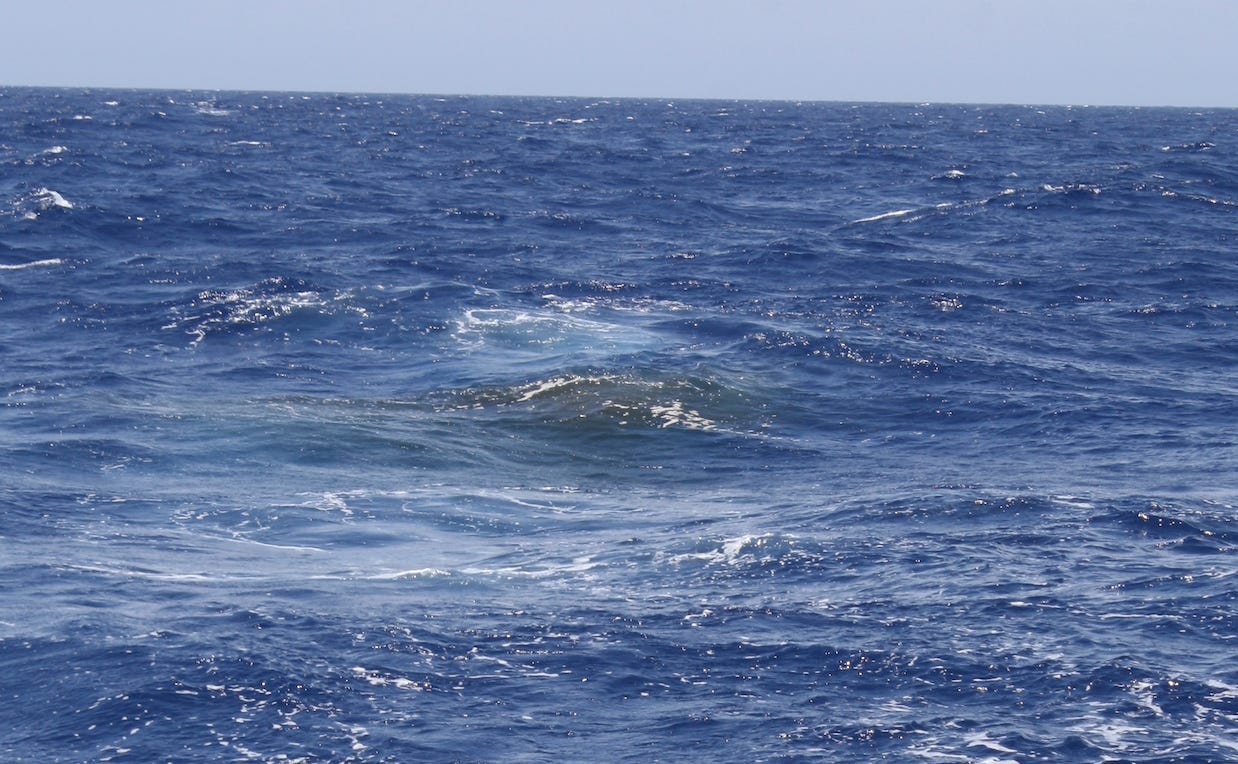
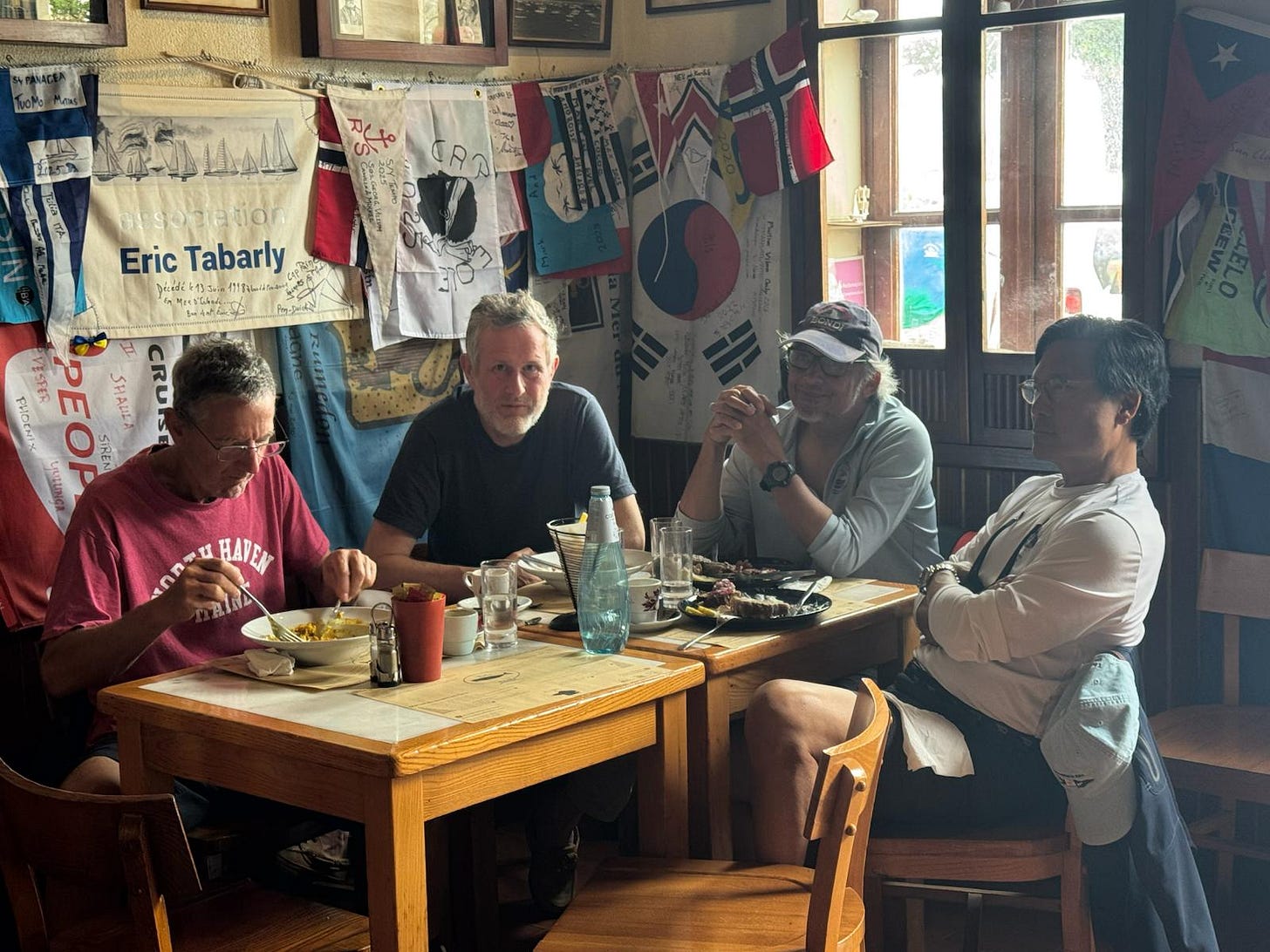

Great article, as always, Tim. And I'm so glad your tooth waited for the Azores to expose itself (recall that conversation en route to St. Johns!). But your estimate of how much an extraction costs in DC - might have been off by just one zero 🤣
Nice passage!!